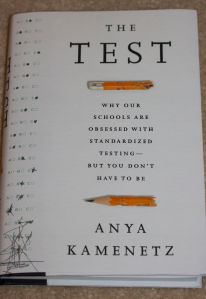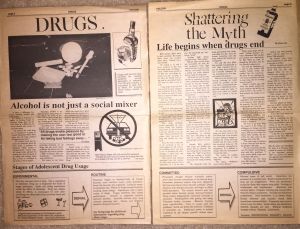Acquiring professional skills such as interviewing is best done with real-world experiences. On Tuesday, April 3, 107 juniors from Downey and Warren High Schools in Downey, CA participated in mock interviews with 32 local business people in an event organized and led by Bayha Group team member Carmen Tovar.
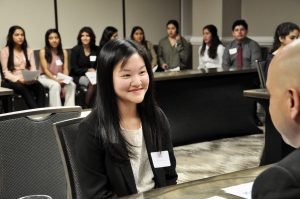
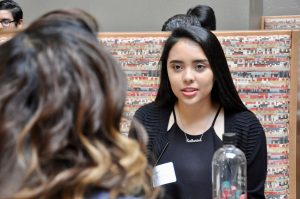
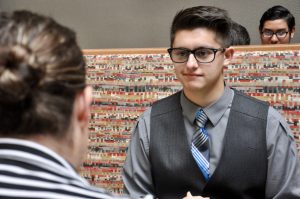
Each student had the chance to role play in a mock job interview two or three times with different interviewers, and then received feedback from each of their “prospective employers.”
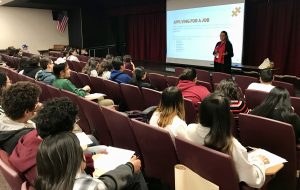
To prepare, students were coached during monthly, after-school work readiness seminars on topics such as non-verbal communication techniques, dress code, resume, cover letters, as well as some specific questions that the interviewers were likely to ask. During one of the seminars, Kathie Sullivan, Volunteer Manager at Gerinet Healthcare, presented her tips on the interview process and what she looks for when hiring.
Common, general interview questions included topics on student’s experiences working on a team, how they manage time and tasks, what drives their curiosity, and how they have overcome challenging experiences.
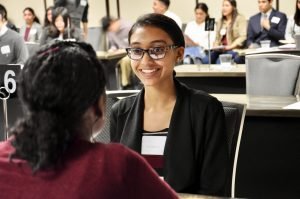
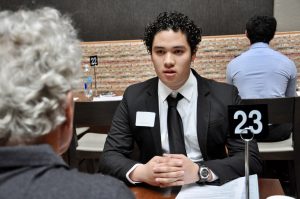
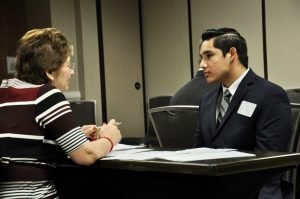
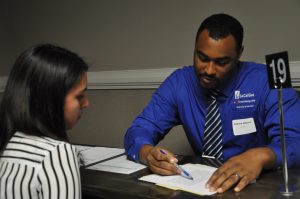
At the conclusion of each mock interview, the interviewer provided constructive feedback to the student regarding their verbal communication skills as well as their written resume and cover letter. They were also able to submit “You’re Awesome” comments to students in areas employers wanted to highlight. Some of them included:
 “He had a poise and professionalism that you don’t see in some college-level students. He knew his subject matter, drew upon multiple experiences to sell his story.”
“He had a poise and professionalism that you don’t see in some college-level students. He knew his subject matter, drew upon multiple experiences to sell his story.”
“Very bubbly, happy, pleasant personality. Easy to talk to. Makes you comfortable immediately. Would love to hire her.”
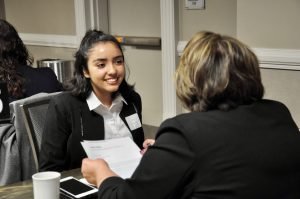
“It is impressive how much experience she has. She made sure to share it by answering all questions clearly and by providing examples of how her experience relates. She was confident and positive, a joy to meet.”
“He did a great job explaining how seemingly non-relevant job experiences gave him very relevant and transferable job skills.”
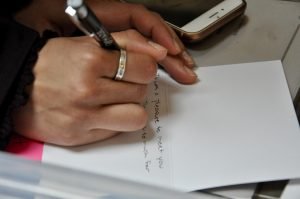
Students hand-wrote thank you cards to the industry partners, and were able to personally express their gratitude.
“I would like to thank you for taking time out of your day to help me become a better candidate in the interviewing process.”
“Thank you for the advice and support, and taking the time to talk to me. I will take your advice to become more involved in school and my community so that I can reach my goals.”
“Thank you for your constructive criticism. I’m very well aware of how to prepare for a real interview now. Your company seems very exciting. Maybe we will meet again. Thank you for your time.”
“It really boosted my confidence and helped me out. I appreciate it greatly.”
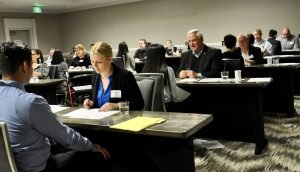
Thank you to all of the partner businesses (listed below) who made this mock interview event possible.
The MADE Work Experience Program is a collaborative partnership between DUSD, Bayha Group, and Southeast Los Angeles County Workforce Development Board with a mission to instill workforce skills in students that will allow them to succeed in the rigors of college and working environments. This is accomplished by teaching participating students essential skills: problem solving, critical thinking, and the ability to use a diverse sets of tools. More information about the Downey MADE Work Experience Program can be found on our blog at https://www.bayhagroup.com/blog/made-work-experience-program/.
Additionally, every summer, DUSD places student employees in local businesses and nonprofits through the MADE Work Experience Program. It’s an educational program designed to provide students with academic, technical, and employability skills to pursue higher education or ongoing learning in a career field of interest.
There are several great benefits to local business partners, and we are currently seeking additional hosts and sponsorships. We invite your company to support the effort. If you would like to learn more about this community program, please contact Carmen at carmen@bayhagroup.com or (858) 633-6191.
Participating industry partners:
Assemblywoman Cristina Garcia
Carrot
City of Downey (ASPIRE)
Cummins Inc.
Downey Chamber of Commerce
Downey Federal Credit Union
Efficient Lighting and Electric
Escrow Corporation
Farmers & Merchants Bank
Financial Partners Credit Union
Gerinet Healthcare
Kaiser Permanente Watts Counseling and Learning Center
Kowalke Organics
Law Office of Blanca Pacheco
Maria Galli State Farm Agency
Mr. John Lacey
Rancho Los Amigos Foundation
Southeast Los Angeles County (SELACO) Workforce Development Board
Southern California Gas Company (SoCalGas)
Strayer Financial Services, Inc.
U.S. Bank
United States Army
USC Bridge Institute
Vazza Cafe
WoodSnap
*All photos by former MADE program student, Anais Macias.


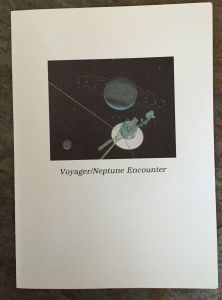 1989: I applied for a full-time summer job at the
1989: I applied for a full-time summer job at the 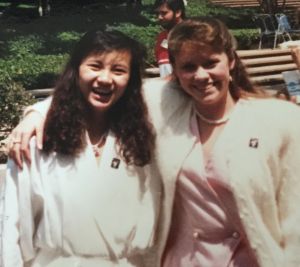 The Encounter days were a big deal. Vice President Dan Quayle came to JPL to speak and commemorate this huge accomplishment for JPL. Entertainers like Sidney Poitier and Woody Harrelson were invited and came to the celebration. After my full-time summer job ended with the Legislative Affairs Office, my contact in human resources at JPL asked if I wanted to continue working during the school year. I said yes and she found me a part-time position working for the Mechanical Systems Division. This was my senior year of high school. Every day after school, I went to work at JPL where my job was to support the administrative staff by making copies, answering the phone, and delivering time sensitive documents across the lab. Even though, I was part-time and still in high school, my supervisor gave me regular performance reviews and we had meaningful conversations about my five-year plan. The Section Manager gave everyone a pound of See’s Candies during the holidays and I was amazed he took time to deliver one to me. After high school, I went to Pasadena City College (PCC) full-time and continued working at JPL part-time. JPL encouraged people to grow and change roles within the organization. I wanted to learn and do more so was able to find a job with the Communications group. I wrote phone orders for when JPLers needed new phones or moved to different offices. This was also during JPL’s transition from analog to digital phones and the lab was replacing answering machines with voicemail so I wrote orders for those features and helped train rocket scientists (literally) on using their new phone systems. Plus, when JPL operators took lunch breaks, I stepped in to answer calls from the general public and transferred them to the appropriate people at JPL. After one year at PCC, I transferred to attend Claremont McKenna College (CMC) and my supervisor in the Communications group let me work on weekends so I had steady income my first year at CMC.
The Encounter days were a big deal. Vice President Dan Quayle came to JPL to speak and commemorate this huge accomplishment for JPL. Entertainers like Sidney Poitier and Woody Harrelson were invited and came to the celebration. After my full-time summer job ended with the Legislative Affairs Office, my contact in human resources at JPL asked if I wanted to continue working during the school year. I said yes and she found me a part-time position working for the Mechanical Systems Division. This was my senior year of high school. Every day after school, I went to work at JPL where my job was to support the administrative staff by making copies, answering the phone, and delivering time sensitive documents across the lab. Even though, I was part-time and still in high school, my supervisor gave me regular performance reviews and we had meaningful conversations about my five-year plan. The Section Manager gave everyone a pound of See’s Candies during the holidays and I was amazed he took time to deliver one to me. After high school, I went to Pasadena City College (PCC) full-time and continued working at JPL part-time. JPL encouraged people to grow and change roles within the organization. I wanted to learn and do more so was able to find a job with the Communications group. I wrote phone orders for when JPLers needed new phones or moved to different offices. This was also during JPL’s transition from analog to digital phones and the lab was replacing answering machines with voicemail so I wrote orders for those features and helped train rocket scientists (literally) on using their new phone systems. Plus, when JPL operators took lunch breaks, I stepped in to answer calls from the general public and transferred them to the appropriate people at JPL. After one year at PCC, I transferred to attend Claremont McKenna College (CMC) and my supervisor in the Communications group let me work on weekends so I had steady income my first year at CMC.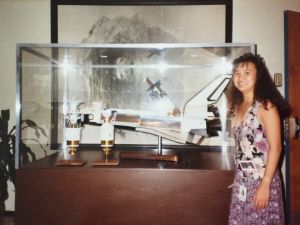
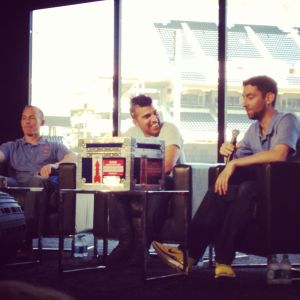
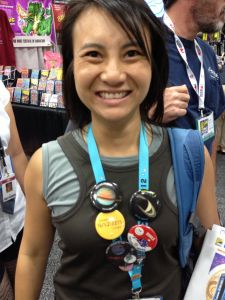 To put it in current education-ese, I had a paid summer internship at JPL in 1989 and it continued for the next five years. Yes, I made a lot of copies and did many low-skill tasks along the way. But, it made me extremely empathetic to others I’ve asked to do those same tasks. JPL also taught me about how to treat people especially when times are tough. I remember when Mars Observer was lost and there were big banners at the lab that read, “MO Phone Home.” Budgets were being slashed and some people received lay-off notices. The people I met with lay-off notices were helped by the human resources folks with reassignments to different groups and offered retraining for different jobs based on their skill sets. Because of my JPL experience, I am a big advocate of young people having access to internships or other work experiences (internships are included in a grant proposal I’m working on now). I have hired summer interns who stayed on to work well past the summers. I now understand how my ‘internship’ at JPL left lasting impressions on me and was an integral part of my life journey. That is why I love and appreciate JPL! Thanks for reading.
To put it in current education-ese, I had a paid summer internship at JPL in 1989 and it continued for the next five years. Yes, I made a lot of copies and did many low-skill tasks along the way. But, it made me extremely empathetic to others I’ve asked to do those same tasks. JPL also taught me about how to treat people especially when times are tough. I remember when Mars Observer was lost and there were big banners at the lab that read, “MO Phone Home.” Budgets were being slashed and some people received lay-off notices. The people I met with lay-off notices were helped by the human resources folks with reassignments to different groups and offered retraining for different jobs based on their skill sets. Because of my JPL experience, I am a big advocate of young people having access to internships or other work experiences (internships are included in a grant proposal I’m working on now). I have hired summer interns who stayed on to work well past the summers. I now understand how my ‘internship’ at JPL left lasting impressions on me and was an integral part of my life journey. That is why I love and appreciate JPL! Thanks for reading.